I have just started to do some bikepacking here in Colorado, and I knew that having the lightest gear possible makes any adventure more enjoyable. I am testing several ultra-lightweight items, including the trick MSR Carbon Reflex 2 double-walled tent with carbon fiber poles, the feathery light and comfortable Therm-a-Rest NeoAir UberLite air mattress, and the warm and high tech Therm-a-Rest Vesper 20F down quilt.
MSR Carbon Reflex 2 Ultralight Tent
The Carbon Reflex 2 is an ultra-lightweight double-walled backpacking tent, that’s non-freestanding and utilizes Easton carbon fiber poles and lightweight materials. The lightweight and compact packing size make it ideal for both backpacking and bikepacking. The Carbon Reflex 2 was designed for two people, but I found it suitable for solo usage as it offered more spaciousness with room to spread my gear around. With the more fragile nature of the lightweight materials, my local rockier terrain, and wanting to keep the tent cleaner and drier, I got their optional protective footprint ($34.95). The Carbon Reflex comes in three models: a 1-person ($449.95), the tested 2-person ($549.95), and a 3-person ($649.95).
At a svelte 944 grams/2 lbs 1 oz (measured) it offers an open mesh design for viewing and ventilation, or you can get full protection with the fly installed. For minimalistic outings, you can create an ultra-lightweight 840g/1 lbs 9 oz setup by purchasing their optional Fast & Light body (just the bathtub portion of the tent), and then using the poles and fly. I prefer having the full tent setup since I like the bug and critter protection from having a fully zippered and mesh tent design.
For further information, refer to msrgear.com.
It’s easy to set up the main mesh body, stake out the four corners, snap together the poles, insert the central pole into its grommets, clip on the tent, and then add the upper cross member.
For warmth and inclement weather, drape the fly over the tent, snap it into the cross member pole tips, loop the ends onto the corner stakes, and finally stake out the two side doors. The doors have a zipper-free vestibule design to save weight and utilize Velcro closures and metal hooks. If it’s windy or raining hard, there are four guy points around the sides of the tent for additional stability and security.
Measured weight:
- Tent (Poles/stakes/body/fly/bags) – 944 grams (bag 29g)
- Main (w/o bags) – 362 grams
- Fly (w/o bags) – 281 grams
- Poles (w/o bag) – 167 grams (bag 8g)
- Stakes (w/o bag) – 92 grams (bag 5g)
- Footprint – 208 grams
Initial Impressions
With only a few overnight camping outings with dry and moderately warm conditions, I found the tent ideal on my short bikepacking forays. It is light, easy to pitch, roomy for one person, and well ventilated when just using the open mesh tent body setup. I was glad I had the optional footprint since it provided some extra protection from rocks, sticks, and sharp pine needles. It was especially advantageous with the thinner tent floor material and my feathery light NeoAir UberLite mattress pad. I did find that when opening the zippered door from the bottom that the sharp bend at the corner would sort of catch and pull up on the floor slightly. It was a pretty minor problem, and closing it in the reverse direction wasn’t an issue. You do need to a bit more cautious when assembling and breaking down the poles as the carbon fiber ferrules are more fragile than a comparable full aluminum pole system. It has decently large mesh pockets on either side of the tent that is ideal for things like headlamps, chapstick, and other items you might need during the night. With the corners of the tent properly staked down, the seam-sealed bathtub floor is taut and flat, and the sidewalls provide plenty of height, which should offer protection from dirt and rain intrusion.
Though the practice sessions only occurred on dry and windy evenings, I have pitched the tent multiple other times in both setups, and haven’t had any issues as yet. I’ll be interested in how the double-walled tent functions in the wind and rain, and especially with regards to how the zipper-free vestibule performs in real-world conditions. I’ll continue checking the long-term durability of the somewhat fragile materials and carbon fiber poles over the test period.
The Carbon Reflex 2 tent is a well-made tent that is fully featured, immanently packable and is ideally suited for ultralight pursuits in the backcountry, especially bikepacking.
Therm-a-Rest NeoAir UberLite Mattress and Air Head Lite Pillow
The NeoAir UberLite is the lightest insulated inflatable air mattress on the market, weighing in at a feathery 248 grams/8.7 ounces for the 6-foot long regular size. It utilizes the Therm-a-Rest Triangular Core Matrix technology, which provides a stable sleep surface and minimal heat loss. It features an R-value of 2.0, which offers plenty of warmth for late spring, summer, and early fall camping, meaning anytime the brunt of cold hasn’t started in the backcountry. With 2.5 inches of cushioning, it provides plenty of comfort for such an ultralight mattress pad and its surprisingly quiet for an air mattress of this type.
It comes in three sizes:
- Small – 20″ x 47″, 170g/6oz, $139.95;
- Regular – 20″ x 72″, 250g/8.8oz, $179.95;
- Large – 25″ x 77″, 340g/12oz, $209.95.
The Air Head Lite Ultralight inflatable air pillow has up to 4 inches of support which offers plenty of comforts while sleeping. It packs down to a minimal size and weighs a minuscule 72 grams/2.5 oz, and the backing of the pillow prevents it from slipping around on the mattress pads surface.
For more information, visit www.thermarest.com.
Utilizing their NeoAir Construction system, the pad rolls and compresses down to a minimal extent, while the Air Head Lite packs down to a pocket dimension.
Measured weight:
- Mattress (w/o bag) – 248 grams (bag 7g)
- Pillow (w/o bag) – 72 grams (bag 5 g)
Initial Impressions
The NeoAir UberLite inflatable air mattress is ultra-lightweight and immanently packable down to the size of a beer can, making it perfect for bikepacking. To use the mattress, pull it out of the stuff sack, flip it entirely out, and blow in around 25 full breaths to inflate. Once I was laying down on the mattress, I could easily adjust the firmness by adding more air or twisting open the valve until I had the proper comfort level. I ended up using what seemed like not enough air since once I was laying down, it cradled me properly without feeling like I was sitting on top of things. Although the baffle system meant the air squeezed back and forth between the chambers when I moved around, it was never a disconcerting feeling, and I quickly got used to it. With just 2.5 inches of loft, the mattress was surprisingly comfortable and warm, though it’s by no means like sleeping on a car camping pad. I didn’t feel like I slipped around on its surface, though it did slide around ever so slightly on the tent floor. To deflate the mattress, open the valve and roll it from the bottom to the top. Keep rolling, and occasionally sweep a hand downwards to push the air out through the baffles, until you get to the end, and then fold it in thirds to fit it into the stuff sack. The material used on the NeoAir UberLite is thin and fragile, so be careful of rocks, sticks, and pine needles that could puncture the surface.
The Air Head Lite inflatable air pillow provides the perfect amount of loft for comfy nights at camp, and the brushed-polyester surface is comfortable for your head while sleeping. Like the mattress, it was simple to customize the firmness by twisting open the air valve. The backing on the pillow meant it stayed put and didn’t slip around on the mattress, which made sleeping and rolling around much more pleasant.
Therm-a-Rest Vesper 20F/-6C Quilt
The Vesper 20F is an ultralight down quilt sleeping system meant for three seasons which offers comfort, warmth, and packability. It utilizes a 900-fill Nikwax Hydrophobic Down which stays drier and 60-times loftier than untreated down, and it’s Responsible Down Standard (RDS) certified. The quilt uses a thermally-efficient box baffled construction design to maximize loft and warmth. The regular-sized 20F quilt weighed in at a light 573 grams/20.2 oz, and it packs down to a size of a 64-ounce water bottle (approximately 10″ x 5″) in its compressible stuff sack system.
It comes in two versions, the Vesper 20F/-6C (tested) and Vesper 32F/0C, which are available either a Regular or Long sizing:
- Vesper 32
- Regular – 58″ x 75″, 15oz, $329.95
- Long – 61″, x 79″, 1lb 1oz, $349.95
- Vesper 20
- Regular – 58″ x 75″, 1lb 3oz, $379.95
- Long – 61″ x 79″, lb 5oz, $399.95
For more information, visit www.thermarest.com.
It features their removable SynergyLink Connector (small strap) that integrates the quilt with a mattress for optimal efficiency, comfort, and versatility. For additional warmth and comfort, it features their ThermaCapture lining, draft protecting perimeter side baffles, and a puffy insulated footbox.
Measured weight:
- Quilt (w/o bag) – 573 grams (bag 49 grams)
Initial Impressions
The three-season Vesper 20F Quilt is an ultralight down sleeping system that offers heaps of features that maximize comfort and warmth. Highlights to the staying drier and loftier 900-fill Nikwax Hydrophobic Down, the box construction, the ThermaCapture lining, the draft preventing side baffles, and puffy insulated footbox. The quilt is versatile since it can be integrated with a mattress pad, used alone as a blanket, and can be bundled up tightly around the body for a sleeping bag set up. It’s lightweight, and it packs down to a large water bottle size in its compressible stuff sack system. Unfortunately, during my third use of the stuff sack, one of the four straps tore when I was compressing the bag.
I have primarily used the quilt with the excellent NeoAir UberLite mattress and Air Head Lite pillow, and they all work perfectly together. To integrate things, wrap the SynergyLink Connector strap around the middle of the mattress, drape the quilt over the top, and have the puffy footbox sitting over the bottom. Once I had the system set up in this fashion, it was simple to adjust the comfort and warmth and cooling aspects of the quilt. Leave the quilt draped over the body for improved cooling, or snap the neck closed and push the side baffles underneath oneself to increase the warmth. You can easily customize between any of these setups, depending on the outside temperature and body equilibrium.
The Vesper 20F is a fully-featured down quilt that provides comfort, warmth, packability, and lightweight, making it an ideal candidate for bikepacking.
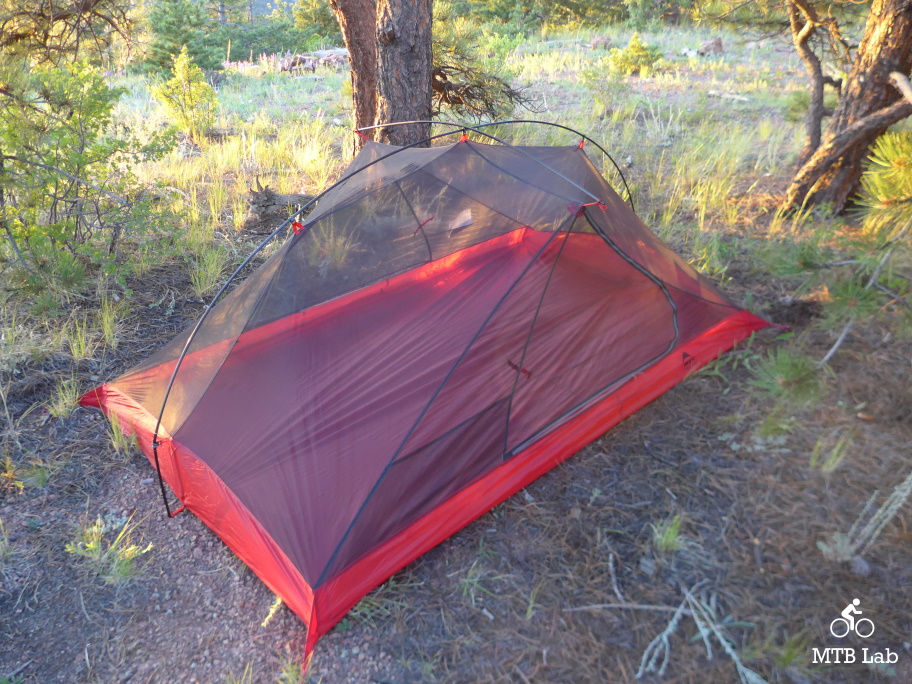
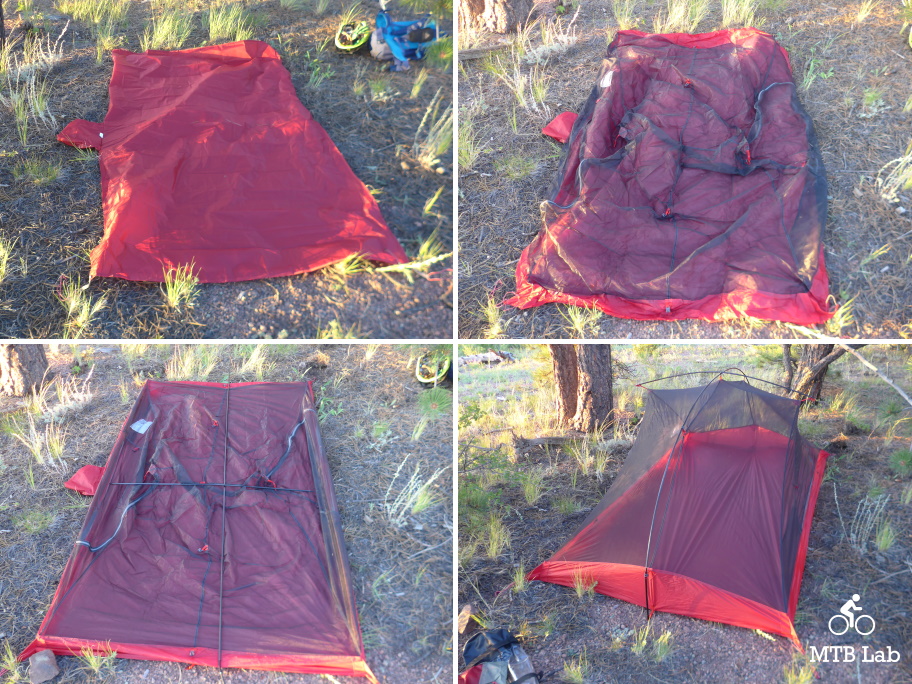
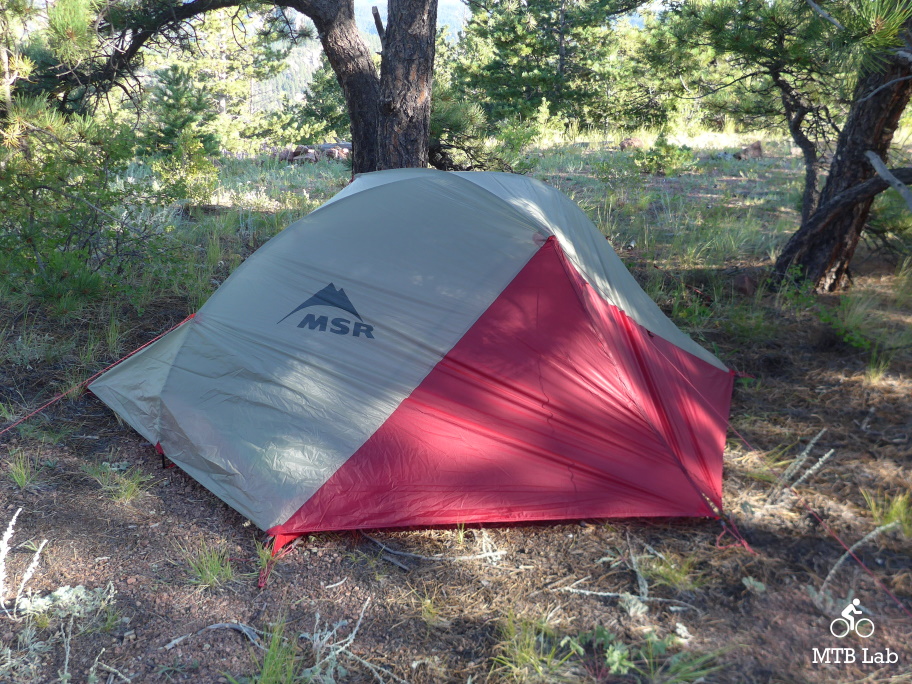
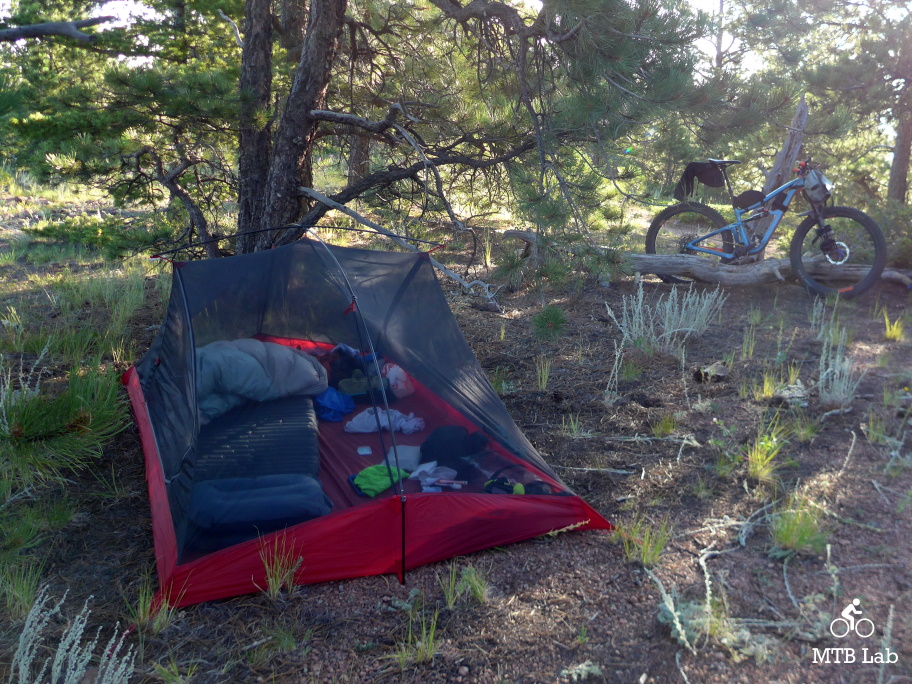
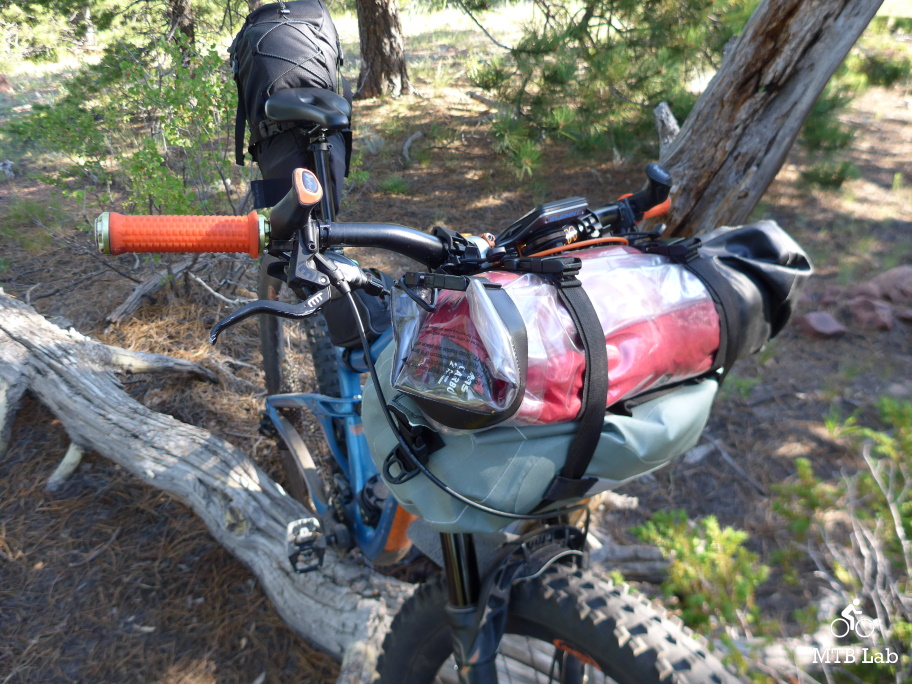


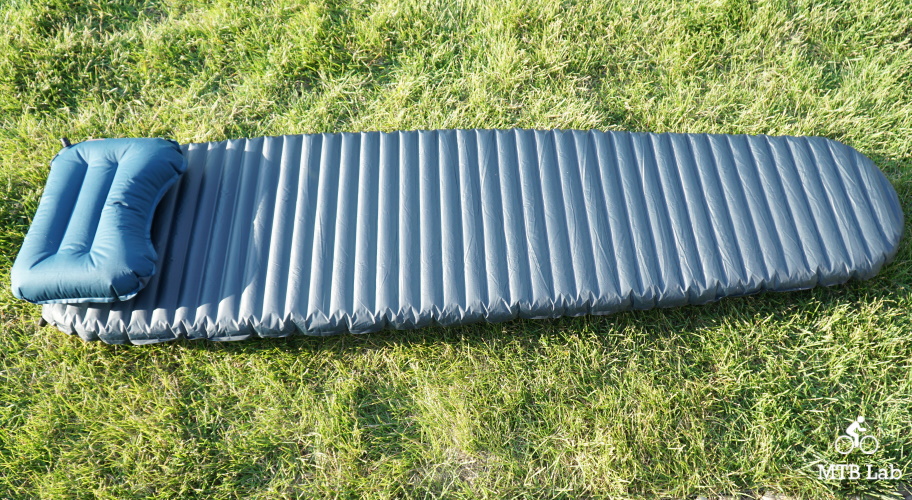
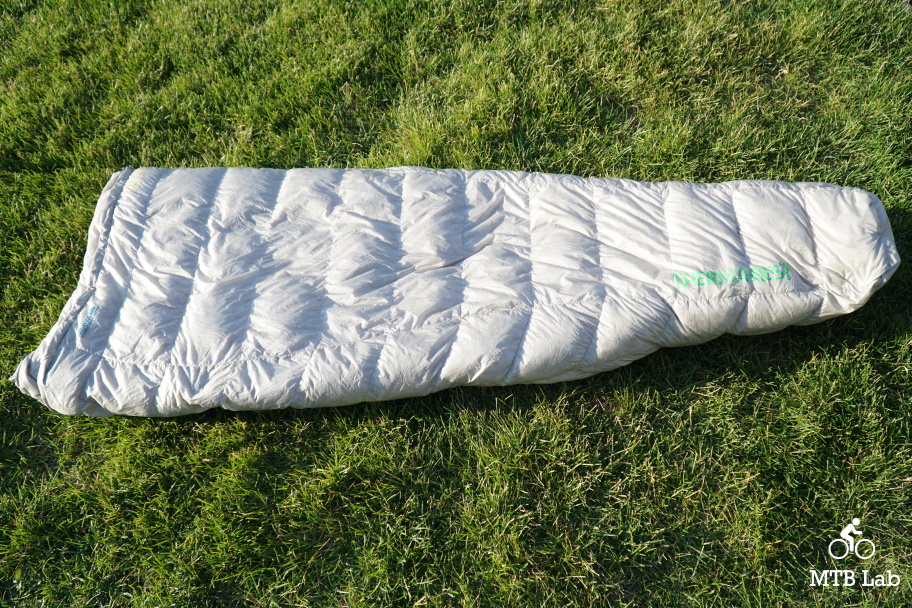

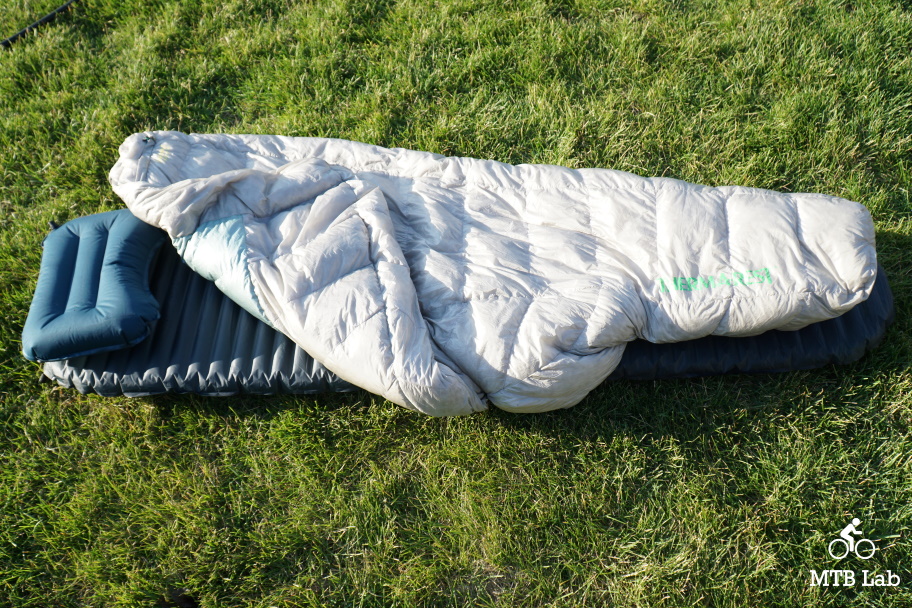





{ 0 comments… add one now }